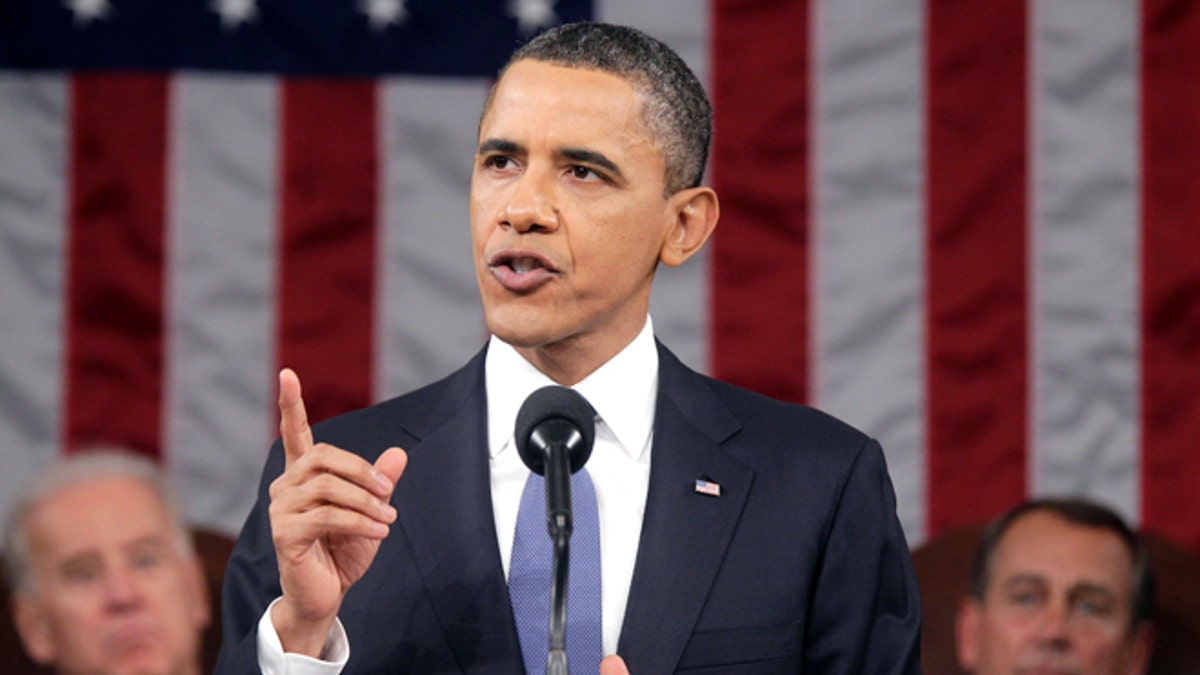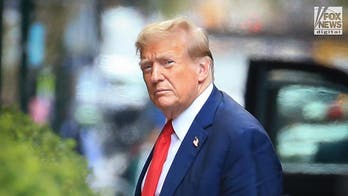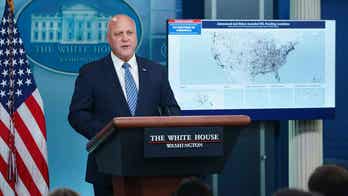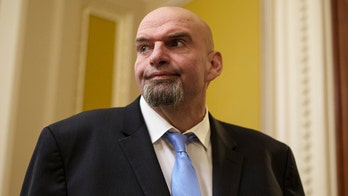
FILE: Jan. 25, 2011: President Obama delivers his State of the Union address on Capitol Hill in Washington, D.C. (AP)
The viewership numbers for the State of the Union address on Tuesday night are hardly expected to compete against an NFL championship game or most other major competitions in sport-obsessed America.
An estimated 30 million people will watch President Obama’s prime time TV address before Congress, compared to the 55.9 million who watched the Jan. 19 San Francisco 49ers vs. Seattle Seahawks game.
But while dwindling viewership appears to be the major detail on which the news media has focused recently, the annual address, which dates back to George Washington, has long been a trove of curious facts and history.
Washington, the country’s first president, delivered the first such annual message before a joint session of Congress in New York in January 1790.
The message was generally known then as “The President’s Annual Message to Congress” and remained as such until deep into the 20th century.
Some historians identify the name turning point as President Franklin Roosevelt’s 1934 message, which he referred to as the “Annual Message to Congress on the State of the Union.”
The opposing political party’s response will be delivered on TV on Tuesday within minutes of Obama finishing his roughly 60-minute address, but that wasn’t always the case.
During the Washington and Adams administrations, the House and Senate debated, then approved official replies that were hand delivered to the president by a delegation from each chamber.
The address, given before the entire Congress but delivered in House chambers, wasn’t always a prime-time event.
It took place in the daytime until 1965, when President Johnson switched to the evening to get a bigger audience.
Several presidents have sometimes skipped the annual winter-time address, with Reagan, Clinton and both Bushes saying it came too soon after their keynote inaugural address.
President Hoover made no personal appearances before Congress.
Historical records don’t include accounts of early speeches, but anecdotal evidence suggests Washington gave some of the shortest -- four to seven minutes. President Truman’s 25,000-plus word speech in 1946 is thought to be longest.
The first live TV address was by Truman, in 1947.
The biggest audience was in 1993, when 66.9 million watched Clinton’s address.
President George W. Bush ushered in the Internet age in 2002 by delivering the first address via live webcast on the Internet.
Obama’s speech last year broke all previous records for Twitter traffic – from 767,000 tweets in 2012 to 1.36 million in 2013.




